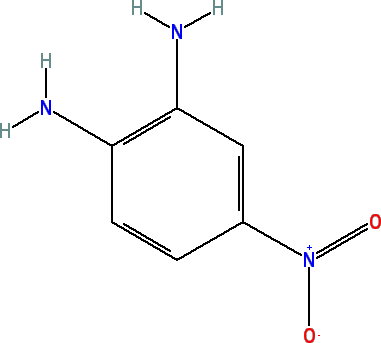4-Nitro-o-Phenylenediamine
Safety Information
Expert Panel for Cosmetic Ingredient Safety:
The safety of these 2-nitro-p-phenylenediamin and 4-nitro-o-phenylenediamine has been assessed by the Expert Panel for Cosmetic Ingredient Safety. The Expert Panel evaluated the scientific data and concluded that for persons not sensitized to these ingredients, 2-nitro-p-phenylenediamine and 4-nitro-o-phenylenediamine were safe as hair dye ingredients. In 2003, as part of the scheduled re-evaluation of ingredients, the Expert Panel considered available new data on 2-nitro-p-phenylenediamine and 4-nitro-o-phenylenediamine and reaffirmed the above conclusion.
Experimental data on 2-nitro-p-phenylenediamine and 4-nitro-o-phenylenediamine, and hair dyes containing these ingredients, suggest that both compounds were nonirritating to the skin and eyes, but were sensitizers on skin. The results of repeated insult patch tests with hair dye products containing these ingredients indicated that neither was an irritant nor a sensitizer to human subjects as normally used.
In the absence of human data on the pure compounds, however, 2-nitro-p-phenylenediamine and 4-nitro-o-phenylenediamine were considered to be potential human sensitizers. Both ingredients, when topically applied, were absorbed. Neither embryotoxicity nor developmental effects were observed when hair dyes containing 2-nitro-p-phenylenediamine and 4-nitro-o-phenylenediamine were applied to the skin. Both ingredients were mutagenic in some bacterial and in vitro systems; both compounds had some genotoxic activity. In feeding studies, very large doses of 2-nitro-p-phenylenediamine induced hepatocellular tumors in female mice. Both compounds were noncarcinogenic in male mice, and in both sexes of rats.
More information about the safety of hair dyes.
2-Nitro-p-phenylenediamine and its salts are not permitted for use in hair dyes in the European Union (see Annex II). 4-Nitro-o-phenylenediamine may be used in oxidative hair marketed in Europe according at a maximum concentration of 0.5%. See Annex III for more information about the use of 4-nitro-o-phenylenediamine in hair dye products.
The European Commission’s Scientific Committee on Consumer Products (SCCP) reviewed the safety of 4-nitro-o-phenylenediamine and concluded that with the exception of sensitizing potential, it did not pose a risk to the consumer when used in hair dyes at concentrations less than or equal to 0.5%.
